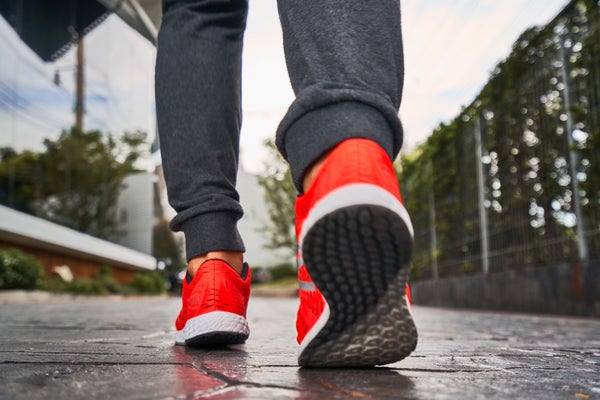A highly experimental implant that delivers electrical stimulation to the spinal cord has substantially improved mobility for one man with advanced Parkinson’s disease, according to a report published today in Nature Medicine.
The technology, developed by researchers at the Swiss Federal Institute of Technology in Lausanne (EPFL), enables the man to walk fluidly and to navigate terrain without falling — something he couldn’t do before the treatment. Parkinson’s causes uncontrollable movements and difficulty with coordination that worsens over time.
The effects of the treatment have lasted for two years. “There are no therapies to address the severe gait problems that occur at a later stage of Parkinson’s, so it’s impressive to see him walking,” says Jocelyne Bloch, a neurosurgeon at the EPFL and a lead author of the paper.
But with only one individual tested, it remains unclear whether the approach will work for other people with the disease. The next step “would be to do a randomized, controlled trial,” says Susan Harkema, a neuroscientist at the University of Louisville in Kentucky who works on stimulation therapy in people with spinal cord injuries.
An alternative approach
Spinal cord stimulation involves surgically implanting a neuroprosthetic device that delivers pulses of electricity to specific regions of the spinal cord in an effort to activate dysfunctional neural circuits. The technique has been used experimentally to enable people paralysed by spinal cord injury to stand on their own, and even to walk short distances.
The method has been shown to improve the gait of people with Parkinson’s, but results are often modest, short-lived or inconsistent, Bloch says. Researchers have tended to place the implant over the upper and middle spine to modulate sensory information heading to the brain, she says.
The Swiss group instead implanted the neuroprosthesis in the lower back, over the lumbosacral spinal cord. There, the stimulation activates the network of neurons running between the spinal cord and the leg muscles. The team had successfully applied the strategy in people with paralysis from spinal cord injury and reasoned that it could be adapted to Parkinson’s.
To personalize the stimulation for Marc Gauthier, the man who participated in their experiment, the researchers gathered data on his walking deficits and patterns by placing sensors on his feet and legs. They then configured the stimulation to compensate for any dysfunction. Such dysfunction could include weak knee extension or a problem contracting the muscles in the buttocks.
“Our specialty is in our understanding of how to stimulate the spinal cord in order to be very precise in the way we adjust leg movement,” says Grégoire Courtine, a neuroscientist at the EPFL who developed the technique. “The novelty of this study is to leverage this understanding and technology in Parkinson’s.”
Larger studies needed
Whether Courtine’s strategy is the way forward for spinal cord stimulation in Parkinson’s is unclear. “There’s not enough data in this paper to conclude that this approach will be better than current standard treatments,” Harkema says. Dozens of studies have tested whether spinal cord stimulation can improve gait in people with Parkinson’s, but most examine only a few participants, so the efficacy of the treatment remains uncertain. The field desperately needs larger studies, Harkema adds.
Bloch and Courtine plan to study their stimulation treatment in six further people with Parkinson’s next year. In the meantime, Gauthier says that his quality of life has greatly improved. One of his greatest challenges before the procedure was what is known as freezing of gait, in which his legs would suddenly get stuck mid-motion.
“I would fall five to six times per day,” Gauthier said at a press briefing. “I would often stay home as well, and was forced to stop working three years ago. For example, walking into a store was impossible before, because of the freezing of gait that would happen in those environments. And now it doesn’t happen anymore.” Gauthier said he previously worked as an architect and was mayor of his town near Bordeaux in France.
Gauthier had previously received standard Parkinson’s treatments, including deep brain stimulation (DBS), in which a neuroprosthesis is implanted deep in the brain. DBS helped to reduce some of his symptoms, such as rigidity, but could not overcome his gait issues.
In the study, Courtine and Bloch tested the spinal stimulation alone and in combination with DBS. They found that the combination of the two stimulators produced the best results.
More advanced DBS systems than Gauthier’s can record brain activity, so the researchers are working on a strategy to harness those recordings to understand the electrical signatures of freezing of gait. The data could be used in a type of feedback mode, so that the spinal cord is stimulated when the legs need it most.
This article is reproduced with permission and was first published on November 6, 2023.
